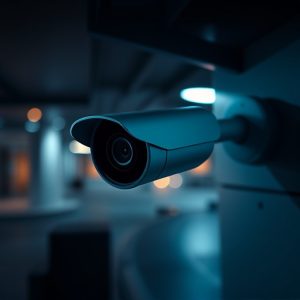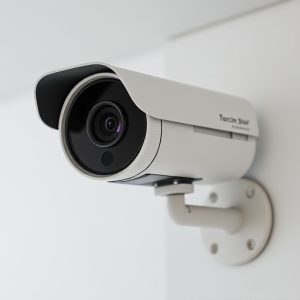Maximizing Safety with Hidden Camera with Built-In DVR Systems: A Comprehensive Guide
Hidden cameras with integrated DVRs have transformed security and surveillance by offering high-qual…….
Hidden cameras with integrated DVRs have transformed security and surveillance by offering high-quality, inconspicuous monitoring solutions that combine functionality with ease of installation. These devices record internally, eliminating the need for external DVR equipment, and provide users with clear, high-resolution video, motion detection, and substantial storage options to capture critical events without interruption. They support real-time remote access for live viewing from any location, making them invaluable in both residential and commercial settings where a discreet security presence is necessary. Enhanced features such as night vision, two-way audio communication, and remote camera angle control (pan, tilt, zoom) have significantly improved their effectiveness. When selecting a hidden camera with a built-in DVR system, it's important to consider high-definition resolution, storage capacity, night vision, field of view, and power supply options to match your surveillance needs and comply with privacy laws. These systems are essential tools for enhancing security across homes, retail spaces, schools, hospitals, and beyond, offering clear evidence and real-time monitoring capabilities for effective incident investigation and improved safety measures.
Unveiling the Capabilities of Hidden Camera Systems with Built-In DVRs
Hidden cameras with built-in DVRs have become an indispensable tool for security and surveillance purposes. These sophisticated systems are designed to blend seamlessly into environments, offering covert monitoring without drawing attention to themselves. The integration of a DVR within the camera itself eliminates the need for external recording devices, streamlining the setup process and reducing potential wiring complexities. This design not only enhances the overall functionality but also ensures that the system’s presence remains discreet. Users can benefit from high-resolution video footage, motion detection capabilities, and ample storage space to record critical moments without interruption. The advanced technology embedded in these hidden camera DVR systems allows for real-time monitoring through remote access, providing users with the ability to check in on their premises from anywhere at any time. This level of security and convenience has made such systems a valuable asset for both residential and commercial applications where maintaining a low profile is essential.
Furthermore, the user experience is significantly improved due to the intuitive operation of these hidden camera with built-in DVR systems. They come equipped with user-friendly interfaces that allow for easy navigation through recorded footage. The high-quality video evidence captured by these devices can be crucial in deterring crime and providing clear documentation for law enforcement should an incident occur. Additionally, the ability to select recording modes, including continuous, motion-triggered, or scheduled recordings, ensures that users optimize storage space according to their specific needs. With advancements in technology, these hidden cameras with built-in DVRs continue to evolve, offering enhanced features such as night vision, two-way audio communication, and remote control pan, tilt, and zoom capabilities, making them even more versatile and effective for surveillance purposes.
Key Features to Consider When Selecting a Hidden Camera with a Built-In DVR
When selecting a hidden camera with a built-in DVR system, it’s crucial to assess several key features that will impact both the effectiveness and legality of your surveillance setup. Firstly, consider the resolution and video quality the camera provides; high-definition footage is essential for clear image capture, which can be pivotal in identifying individuals or understanding incidents. Additionally, ensure the DVR supports ample storage capacity or has reliable loop recording to prevent data overwriting without missing events. Optimal storage solutions can range from SD cards to cloud storage options, depending on your preference and the camera’s compatibility.
Another vital aspect is the camera’s discreetness and the quality of its night vision capabilities. A hidden camera must remain undetected to serve its purpose effectively. Cameras equipped with infrared sensors allow for monitoring in low-light or dark environments, ensuring around-the-clock surveillance. Furthermore, the field of view is a significant factor; it determines the area under observation. Wide-angle lenses can cover larger areas, making them suitable for comprehensive coverage. Lastly, consider the camera’s power requirements and whether it operates on batteries, AC power, or both. This will influence its placement and the frequency with which you need to service or charge the device. These features, combined with a robust and user-friendly DVR system, will form the backbone of your surveillance setup. It’s imperative to balance these needs based on your specific monitoring requirements and legal constraints associated with privacy.
The Technical Aspects of Hidden Cameras with DVR Functionality: Understanding Recording Quality and Storage
When considering a hidden camera with built-in DVR functionality for surveillance purposes, it’s crucial to evaluate both the recording quality and the storage capabilities. High-definition recording is a key factor that contributes to the clarity of the footage captured by such devices. A camera with at least 720p resolution is recommended for capturing detailed images, which can be particularly important for identifying individuals or analyzing specific events. Recording quality also encompasses the frame rate; higher frame rates, typically 30 or 60 frames per second, offer smoother video playback and can be essential for capturing fast-moving objects without blurring.
In addition to recording quality, the storage capacity of a hidden camera DVR system is equally significant. These systems usually come with built-in memory that varies in size from gigabytes to terabytes. The type of storage medium, whether it’s an SD card or internal flash memory, affects both the amount of data that can be recorded and how easily the footage can be transferred or backed up. It’s also worth considering the file format used for storage, as some systems may support continuous recording, overwriting older footage once the storage limit is reached, while others offer motion-activated recording to conserve space. Users should determine their specific needs based on the intended use of the camera, balancing the desired length of surveillance coverage with the available storage capacity to ensure that important moments are not missed.
Practical Applications and Benefits of Hidden Camera Systems with Integrated DVRs in Various Settings
Hidden camera systems with integrated Digital Video Recorders (DVRs) offer a multitude of practical applications and benefits across various settings, from residential security to commercial surveillance needs. In homes, these discreet cameras serve as an additional layer of security, allowing homeowners to monitor their property remotely. A hidden camera with built-in DVR can be placed strategically to record activities without drawing attention, providing valuable footage in the event of a break-in or other security incidents. This technology enables real-time alerts and data storage, enhancing the overall effectiveness of home surveillance systems.
In commercial and public spaces, these integrated systems play a pivotal role in maintaining safety and deterring criminal activities. Retail establishments utilize hidden camera with built-in DVR setups to protect against theft and fraud, while also optimizing store operations by monitoring customer traffic patterns. Similarly, educational institutions and healthcare facilities employ these systems for security purposes, ensuring the safety of students, faculty, and patients. The integration of DVR functionality means that critical incidents can be captured and reviewed, aiding in investigation processes and improving security protocols in real-time.


